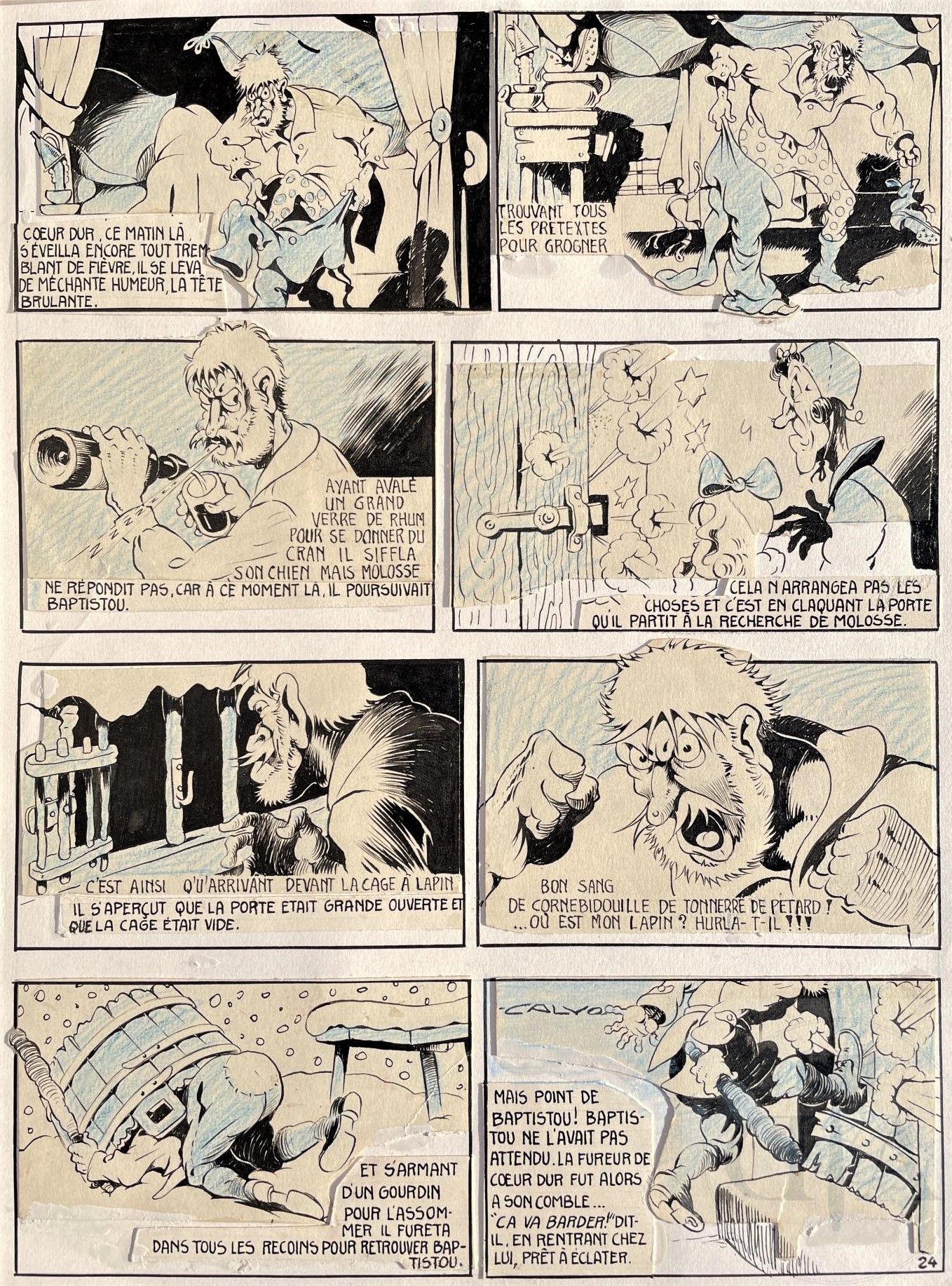Descripción
Calvo/Baptistou la intrépida liebre. Placa original reensamblada n°24 que ilustra al cazador "Coeur Dur" que se levanta de muy mal humor porque Baptistou se ha escapado... Una obra de calidad que ilustra la maestría técnica del maestro Uderzo. Rara pieza de coleccionista. Tinta china y lápiz azul, alrededor de 1955. Firmado. TBE. 23 X 30 cm Edmond François Calvo alias Calvo (1892-1957) es un autor y dibujante francés. Comenzó a dibujar para la prensa, especialmente como caricaturista para el Canard enchainé entre 1919 y 1921. En 1938, dejó su posada y decidió convertirse en ilustrador y dibujante de cómics a tiempo completo. Su álbum más famoso, La bête est morte, que cuenta la historia de la Segunda Guerra Mundial trasladada a un mundo animal, se publicó en 1944. El gran éxito de este trabajo hizo que Walt Disney se pusiera en contacto con él y le ofreciera un trabajo en sus estudios, que rechazó. De 1942 a 1958, Calvo creó catorce series diferentes, entre ellas Rosalie, Patamousse, Coquin le petit cocker, Cricri Souris d'appartement, que dio nombre a la revista Cricri, y prefiguró, con su cómplice el gato Matou, su serie más conocida Moustache et Trottinette, que se publicó a partir de 1953 en la revista femenina Femmes d'aujourd'hui. Su línea redonda y dinámica estaba influenciada por la de Walt Disney. Además de ser un destacado dibujante, también es reconocido en el mundo del cómic como el maestro del joven Albert Uderzo que, en su juventud, iba a visitarle a su casa para verle dibujar y recibir sus consejos.
461
Online
Calvo/Baptistou la intrépida liebre. Placa original reensamblada n°24 que ilustra al cazador "Coeur Dur" que se levanta de muy mal humor porque Baptistou se ha escapado... Una obra de calidad que ilustra la maestría técnica del maestro Uderzo. Rara pieza de coleccionista. Tinta china y lápiz azul, alrededor de 1955. Firmado. TBE. 23 X 30 cm Edmond François Calvo alias Calvo (1892-1957) es un autor y dibujante francés. Comenzó a dibujar para la prensa, especialmente como caricaturista para el Canard enchainé entre 1919 y 1921. En 1938, dejó su posada y decidió convertirse en ilustrador y dibujante de cómics a tiempo completo. Su álbum más famoso, La bête est morte, que cuenta la historia de la Segunda Guerra Mundial trasladada a un mundo animal, se publicó en 1944. El gran éxito de este trabajo hizo que Walt Disney se pusiera en contacto con él y le ofreciera un trabajo en sus estudios, que rechazó. De 1942 a 1958, Calvo creó catorce series diferentes, entre ellas Rosalie, Patamousse, Coquin le petit cocker, Cricri Souris d'appartement, que dio nombre a la revista Cricri, y prefiguró, con su cómplice el gato Matou, su serie más conocida Moustache et Trottinette, que se publicó a partir de 1953 en la revista femenina Femmes d'aujourd'hui. Su línea redonda y dinámica estaba influenciada por la de Walt Disney. Además de ser un destacado dibujante, también es reconocido en el mundo del cómic como el maestro del joven Albert Uderzo que, en su juventud, iba a visitarle a su casa para verle dibujar y recibir sus consejos.
Podría interesarle
